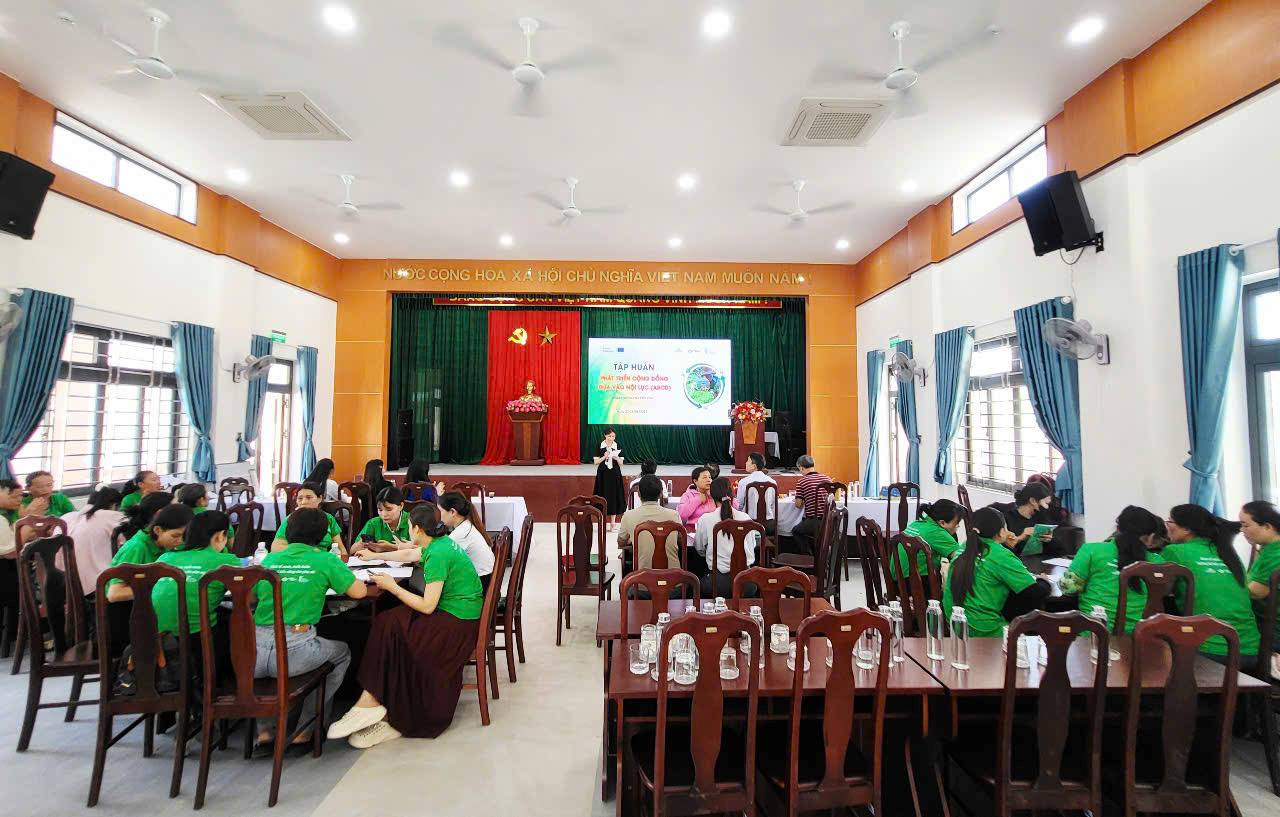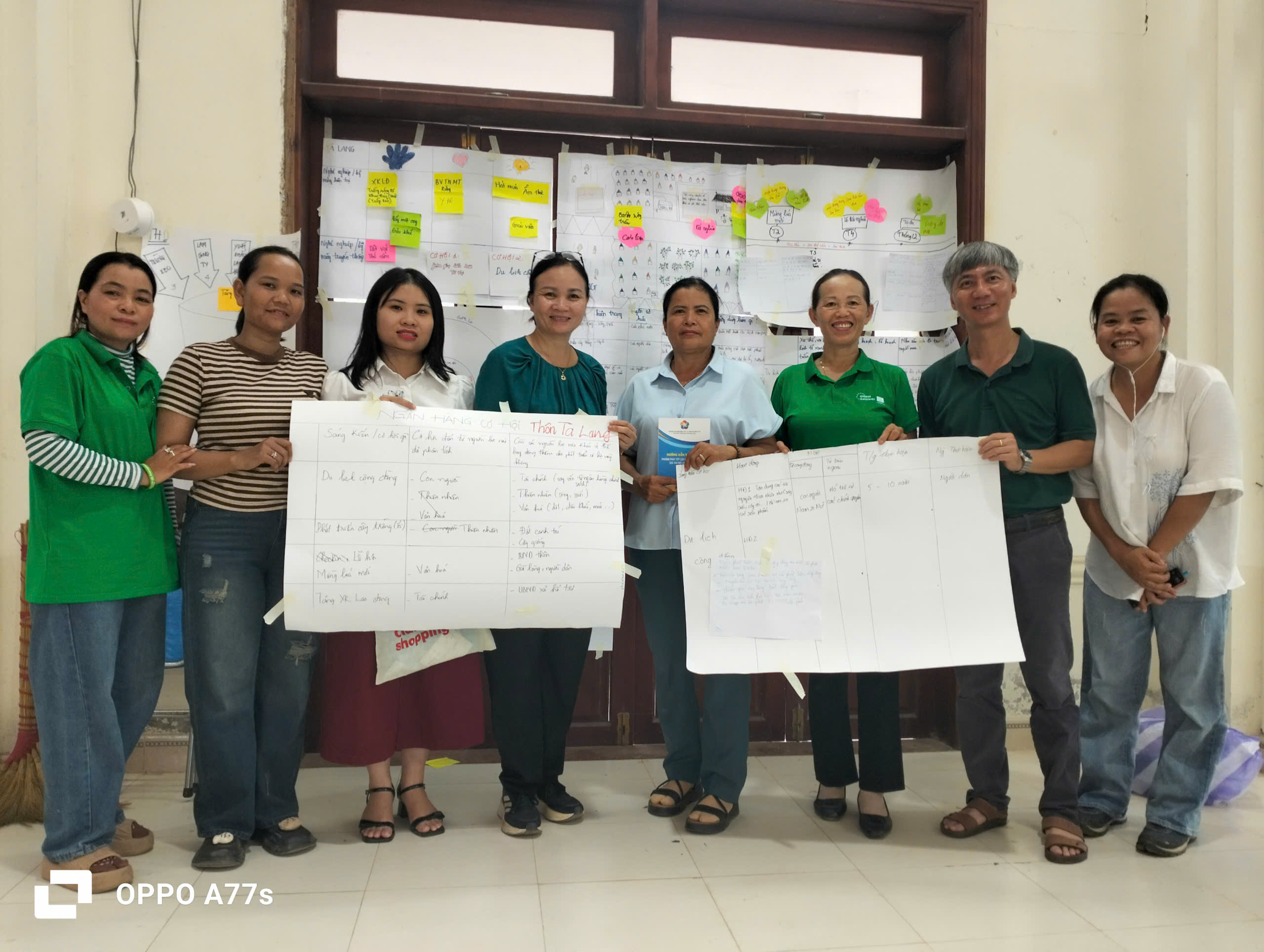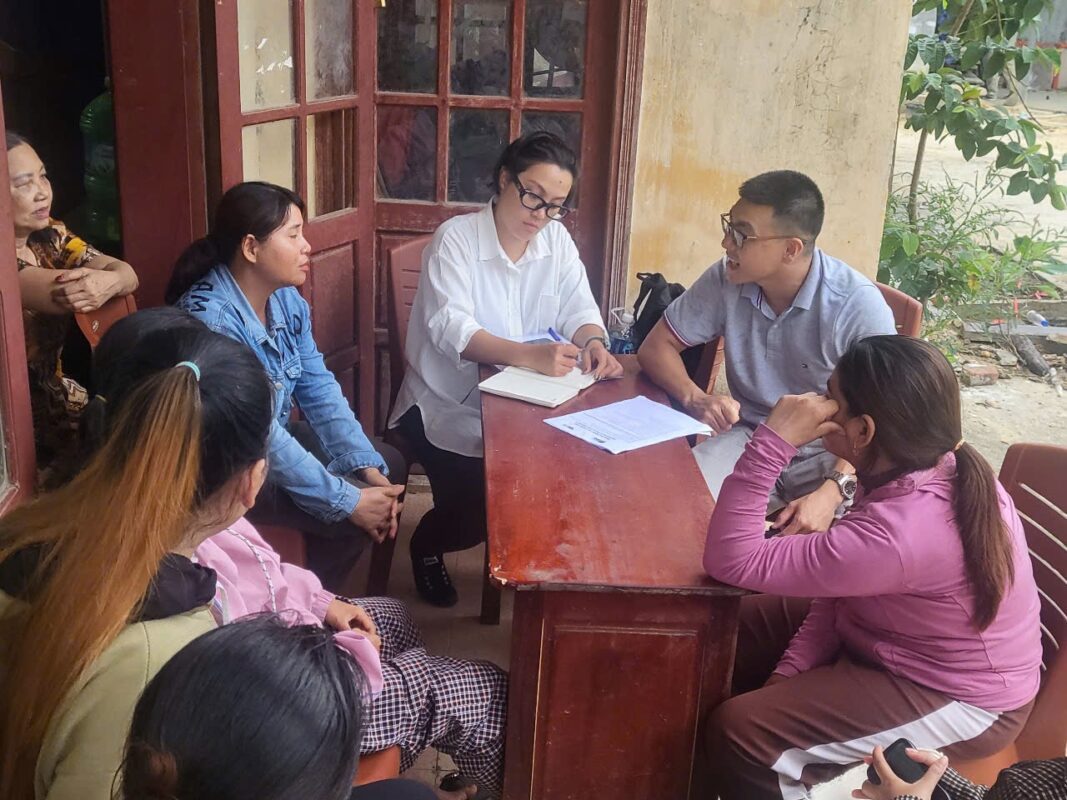TRAINING ON ASSET-BASED COMMUNITY DEVELOPMENT (ABCD) FOR WOMEN
From June 20 to 26, the GreenViet Biodiversity Conservation Center (GreenViet), in collaboration with the People’s Committees of Tu Commune (Quang Nam Province), Hoa Bac Commune, and Tho Quang Ward (Da Nang City), organized a training course on the Asset-Based Community Development approach (ABCD).

This activity is a key component and approach of the project titled “Enabling women in central of Vietnam to improve their live and protect the environment, natural resources by applying green and circular economy”. The training brought together 94 women from Tu Commune, Hoa Bac Commune, and Tho Quang Ward—most of whom are already involved in or have ideas for green and circular business initiatives. These women were selected as core participants who will accompany the project throughout its four-year implementation.

At each locality, the ABCD training course took place over two days, focusing on three main components: Introduction to the ABCD approach and six tools to identify and map community assets and potential; Completion of local resource assessments and action planning based on identified assets; Initial development of ideas for low-carbon, green, and circular economy models leveraging local strengths.

In addition to ABCD methodology, participants were also trained in concepts of green and circular economy, including clear distinctions between traditional and green economic models, as well as practical examples. This enabled participants to grasp the core principles of green and circular economies and relate them to their own realities—laying the foundation for locally rooted green initiatives.
The training marked an important starting point for mindset shifts and empowerment among women in driving sustainable community development. Women were encouraged to recognize and value their own capabilities and community assets, rather than focusing solely on difficulties or limitations. Several initial group ideas were formed, aiming to establish sustainable livelihoods aligned with natural resource protection. Examples included: Utilizing agricultural by-products to make recycled crafts; Cultivating native plants suited to local climate and soil; Improving local products through green and circular practices to meet market demands.

In Tu Commune, where most trainees are from the Co Tu ethnic minority, group discussions helped identify promising green and circular economy ideas such as: Wild vine tea production, Processing herbal teas from forest plants, Developing green cuisine experiences based on traditional dishes such as bamboo tube rice (cơm lam), Tà-vạt wine, herbal-leaf fermented wine, and buffalo horn cakes (bánh sừng trâu). These models preserve cultural heritage while offering potential for community-based tourism products.
In Hoa Bac Commune, participants explored opportunities to integrate local strengths into community tourism models, such as homestays combined with fruit gardens and organic vegetable plots—creating immersive experiences for visitors.

Throughout the sessions, women collaborated, shared experiences, created action plans, and proposed concrete steps forward. The training series clearly demonstrated that when women are equipped with the right tools and approaches, and when their internal strengths are activated, they become pioneers in building greener and more sustainable communities.
These initial steps serve to bridge local values with green and circular economy models—positioning women not only as producers but also as innovators and community leaders in sustainable development.





